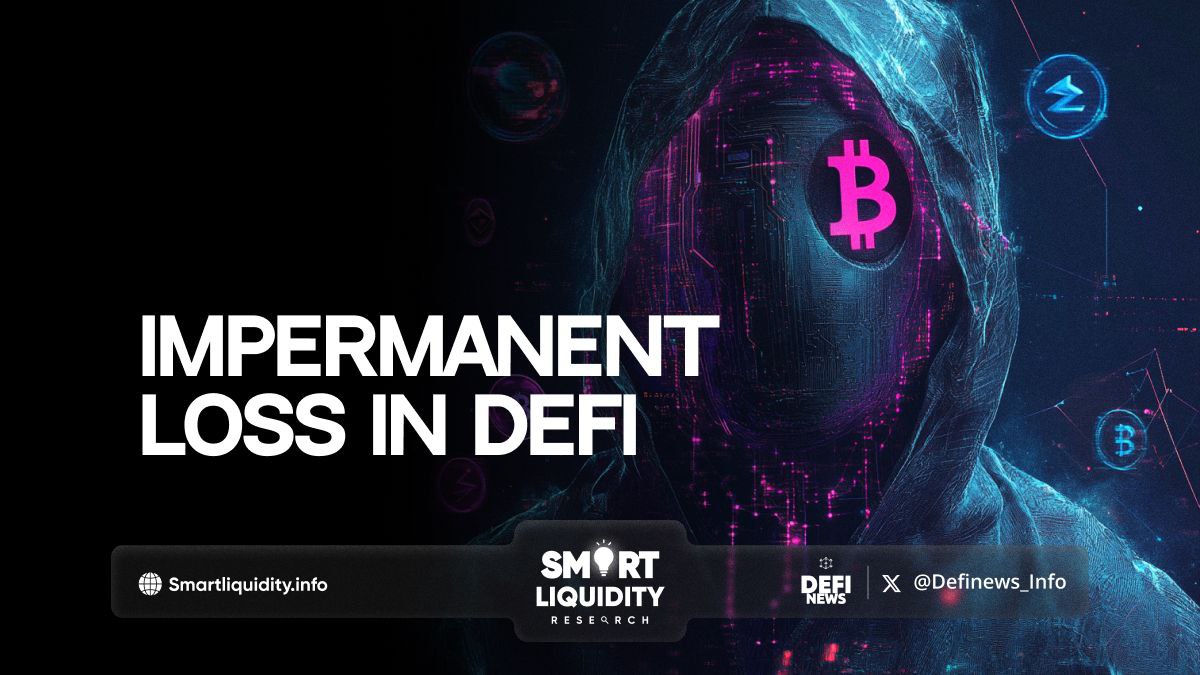Impermanent Loss in DeFi: Explained


Impermanent Loss in DeFi: Explained! In the world of decentralized finance (DeFi), the term “impermanent loss” is often discussed, particularly among liquidity providers. Impermanent loss is a concept crucial for anyone participating in liquidity pools, as it directly impacts the profitability of their investments.
In this article, we’ll break down impermanent loss, why it happens, how to mitigate it, and why it matters to DeFi participants.
What is Impermanent Loss?
Impermanent loss occurs when the value of assets in a liquidity pool changes compared to simply holding those assets outside the pool. When a liquidity provider (LP) deposits two assets into a pool, they are exposed to price fluctuations between those assets. If one asset appreciates or depreciates significantly compared to the other, the value of their deposited assets within the pool may become less than what they would have had if they had simply held the assets in their wallet. This discrepancy is known as impermanent loss.
The loss is called “impermanent” because, theoretically, if the price ratio between the two assets returns to the original ratio, the loss will be reversed. However, if the LP withdraws its assets while the price difference persists, the loss becomes permanent.
How Does Impermanent Loss Occur?
To understand impermanent loss, let’s consider an example. Suppose an LP deposits equal amounts of ETH and USDT into a liquidity pool. If ETH’s price rises relative to USDT, the automated market maker (AMM) algorithm will adjust the pool’s balance to maintain a 50/50 ratio of assets. This means the LP now holds less ETH and more USDT in the pool compared to their initial deposit.
If the LP decides to withdraw its assets after the price change, the value of its holdings may be lower than if it had just held the original amount of ETH and USDT without providing liquidity.
Calculating Impermanent Loss
Impermanent loss increases as the price divergence between the two assets in the pool grows. Here’s an approximate breakdown of the impact:
- 1.25x price change: ~0.6% impermanent loss
- 1.50x price change: ~2.0% impermanent loss
- 2x price change: ~5.7% impermanent loss
- 3x price change: ~13.4% impermanent loss
- 5x price change: ~25.5% impermanent loss
As you can see, larger price changes result in greater impermanent loss. Liquidity providers can face significant reductions in the value of their holdings if one asset in the pair experiences a drastic price increase or decrease.
Why Do People Provide Liquidity Despite Impermanent Loss?
Despite the risk of impermanent loss, many users still choose to provide liquidity due to the potential for other rewards, such as:
- Transaction Fees
AMMs like Uniswap charge fees on each transaction, which are distributed to LPs. These fees can offset the loss, depending on the pool’s trading volume. - Liquidity Mining Incentives
Many DeFi projects offer additional token rewards for providing liquidity. These incentives can provide substantial returns that may surpass the impermanent loss. - Long-Term Investment Strategy
Some LPs believe that, over time, the transaction fees and incentives will outweigh the impact of impermanent loss.
Strategies to Mitigate Impermanent Loss
If you’re interested in providing liquidity but want to mitigate impermanent loss, here are some strategies:
- Choose Stablecoin Pairs
Stablecoin pairs (e.g., USDT/USDC) have minimal price divergence, reducing the risk of impermanent loss. - Select Low-Volatility Pairs
By choosing pairs with low price volatility, you reduce the chances of significant price divergence. - Monitor Liquidity Pools Regularly
Keeping track of the performance of your assets in the pool can help you decide when to withdraw to minimize loss. - Utilize Impermanent Loss Protection Protocols
Some protocols, like Bancor and Thorchain, offer solutions to protect LPs from impermanent loss. These protections may include insurance or compensation mechanisms. - Provide Liquidity in Stable Pools
Some protocols offer “stable pools” designed to minimize impermanent loss by focusing on assets with similar price behaviors.
The Impact of Impermanent Loss on DeFi
Impermanent loss remains one of the main challenges for liquidity providers in DeFi, particularly for those dealing with volatile assets. It’s a fundamental part of the risk profile in DeFi protocols, as LPs face the potential for losses even if prices move in a favorable direction for one of the assets in a pair. This risk is also why some investors hesitate to engage with liquidity pools despite the rewards.
In response, many DeFi platforms are actively working on ways to mitigate impermanent loss or to compensate users. The introduction of impermanent loss protection mechanisms, as well as increased education and transparency, has helped DeFi users make more informed decisions about liquidity provision.
Final Thoughts
Impermanent loss is a nuanced concept that every potential liquidity provider should understand before participating in DeFi. While it can reduce returns, there are methods to manage and even offset the potential loss. By carefully selecting pools, monitoring asset performance, and taking advantage of impermanent loss protection protocols, users can participate in DeFi liquidity provision with greater confidence.
DeFi continues to evolve, and the industry is developing ways to mitigate risks for LPs. As these solutions improve, the risk of impermanent loss may become more manageable, opening up DeFi liquidity pools to even more participants.




